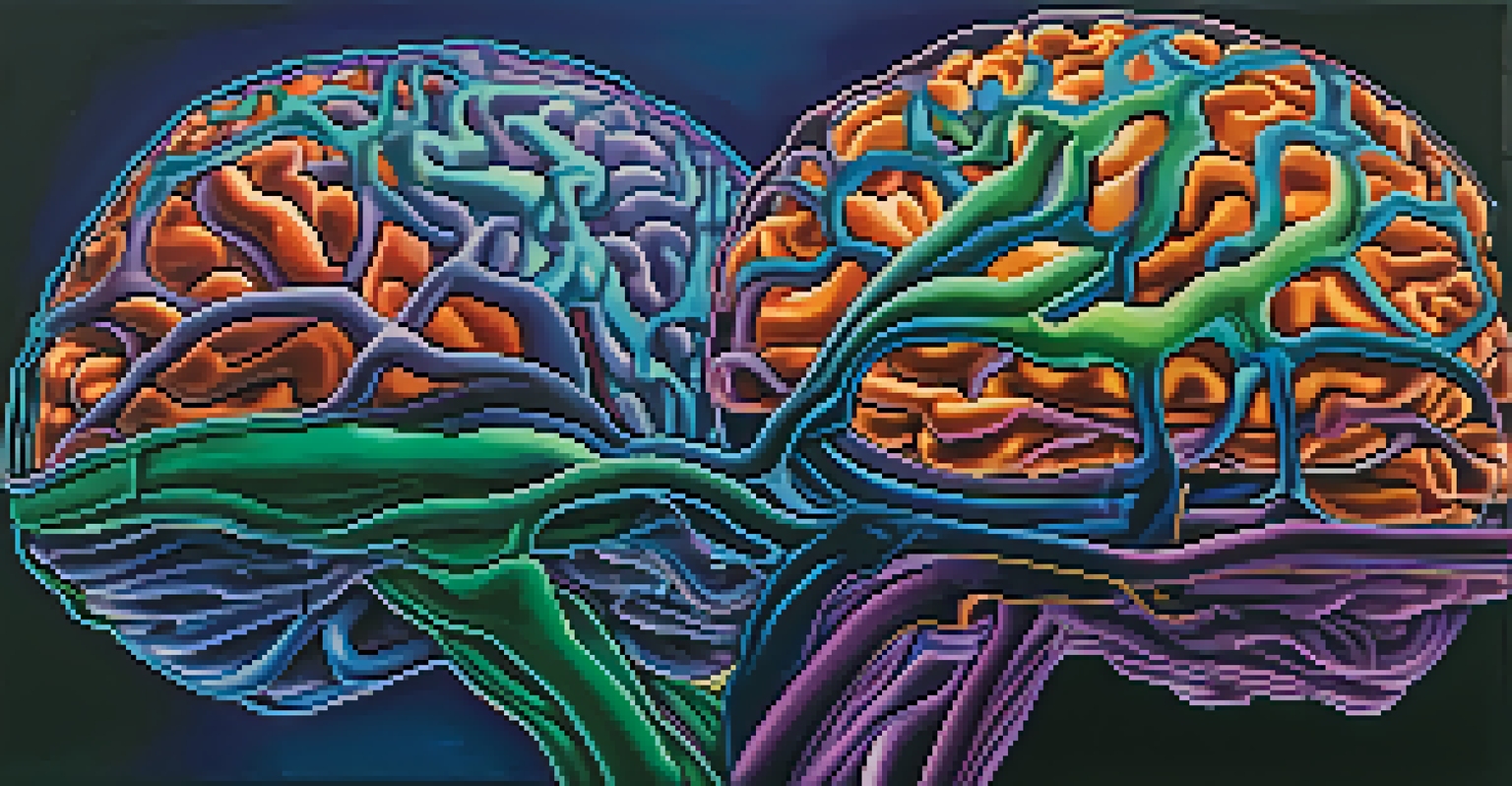Entheogens in Therapy: Their Role in Memory Recovery

Understanding Entheogens: A Brief Overview
Entheogens are substances that induce altered states of consciousness, often used in spiritual or therapeutic contexts. Common examples include psilocybin from mushrooms and ayahuasca from the Amazon. These compounds have been gaining attention for their potential benefits in mental health treatment, particularly in memory recovery.
The mind is everything. What you think, you become.
In recent years, the stigma surrounding entheogens has decreased, leading to increased research into their therapeutic uses. Scientists are exploring how these substances can help individuals process traumatic memories or enhance cognitive function. Understanding their role in therapy helps demystify their effects and opens up new avenues for treatment.
While entheogens have been used for centuries in various cultures, modern psychotherapy is now beginning to integrate these practices. This shift highlights a growing recognition of the need for innovative approaches to mental health, particularly for conditions like PTSD and depression, which often involve memory issues.
The Science Behind Memory and Trauma
Memory plays a crucial role in how we experience and process trauma. When an individual faces a traumatic event, the brain may struggle to integrate the memory, leading to symptoms of PTSD. Understanding how memory works is essential for developing effective therapeutic approaches.

Research shows that trauma can alter brain structures, particularly in areas responsible for memory, such as the hippocampus. This alteration may lead to fragmented or suppressed memories. By addressing these memory disruptions, therapists can help clients reclaim their narratives and heal from their experiences.
Entheogens Aid Memory Recovery
Entheogens can facilitate access to repressed memories, allowing individuals to confront and process traumatic experiences in a therapeutic setting.
Entheogens may offer a unique pathway to accessing repressed memories by promoting neuroplasticity—the brain's ability to adapt and reorganize itself. This process can facilitate deeper emotional processing and integration of traumatic experiences, leading to lasting therapeutic benefits.
How Entheogens Facilitate Memory Recovery
Entheogens can create a profound shift in consciousness, allowing individuals to confront their memories with a fresh perspective. This altered state may enable people to revisit traumatic events without the same emotional weight, fostering a sense of safety and exploration. It's like looking at an old photograph from a different angle, revealing details previously unnoticed.
Trauma is not what happens to you, but what happens inside you as a result of what happens to you.
During therapy sessions that incorporate entheogens, clients often report enhanced emotional clarity and insight. These substances can help unlock memories that have been buried or distorted, enabling a more comprehensive understanding of one's experiences. This process can be transformative, as it allows individuals to rewrite their narratives.
Moreover, the communal aspect of using entheogens in a therapeutic setting can enhance the healing experience. Sharing insights and feelings with others can create a supportive environment, fostering connections that facilitate memory recovery. This sense of community can be just as healing as the substances themselves.
Case Studies: Success Stories in Therapy
Numerous case studies highlight the successful use of entheogens in therapeutic contexts, particularly for memory recovery. For instance, research on psilocybin therapy for depression has shown significant improvements in patients' ability to process memories associated with their mental health struggles. These success stories underscore the potential of entheogens in fostering healing.
Another compelling example is ayahuasca, which has been used in traditional settings for generations. Participants often report profound insights into their past traumas, leading to emotional release and healing. These narratives provide a glimpse into how entheogens can assist in memory recovery and personal growth.
Growing Acceptance in Therapy
As research into entheogens expands, there is a shift towards integrating these substances into mainstream therapeutic practices for mental health.
While results can vary, the growing body of evidence suggests that entheogens may play a vital role in therapeutic settings. As more individuals share their experiences, the conversation around their efficacy continues to evolve, paving the way for broader acceptance in mainstream therapy.
Challenges and Considerations in Using Entheogens
Despite the promising potential of entheogens in therapy, there are challenges and considerations to keep in mind. For instance, the legal status of these substances varies widely around the world, impacting their availability for therapeutic use. Navigating the legal landscape can be a significant barrier to integrating entheogens into treatment plans.
Additionally, not everyone may respond positively to entheogens. Individuals with certain mental health conditions, such as schizophrenia or bipolar disorder, may experience adverse effects. It's crucial for therapists to conduct thorough assessments and ensure that clients are suitable candidates for this form of therapy.
Finally, the importance of a supportive therapeutic environment cannot be overstated. Ensuring that clients feel safe and guided throughout the process is essential for maximizing the therapeutic benefits of entheogens. Proper preparation and integration support can make a world of difference in the overall experience.
The Future of Entheogens in Therapeutic Practice
As research continues to unfold, the future of entheogens in therapy looks promising. With increasing interest from the scientific community, more studies are being conducted to understand the full scope of their effects on memory and trauma. This growing body of evidence may pave the way for more mainstream acceptance of entheogenic therapies.
Moreover, as public perception shifts, we may see broader integration of these practices into traditional therapeutic settings. This could lead to a new era in mental health treatment, where entheogens are utilized alongside conventional methods for comprehensive care. Imagine a world where therapy includes a variety of tools, tailored to individual needs.
Challenges in Therapeutic Use
Despite their potential benefits, the legal status and individual responses to entheogens pose significant challenges for their use in therapy.
Ultimately, the journey of entheogens in therapy reflects a larger movement toward holistic mental health care. By embracing innovative approaches and honoring ancient traditions, we can create a more inclusive and effective landscape for healing. The future holds the potential for transformation, not just for individuals, but for the therapeutic community as a whole.
Conclusion: Embracing a New Paradigm in Healing
The exploration of entheogens in therapy is more than just a trend; it's a paradigm shift in how we approach mental health. By acknowledging the potential of these substances, we open the door to new possibilities for healing and memory recovery. This shift encourages us to rethink what therapy can be and who can benefit from it.
As more people seek alternative treatments for mental health challenges, the conversation around entheogens becomes increasingly relevant. With proper research, ethical practices, and supportive environments, these substances can become valuable tools in therapy. It's time to embrace a holistic view of healing that honors both modern science and ancient wisdom.

In conclusion, the journey of integrating entheogens into therapeutic practices is just beginning. By fostering an open dialogue and continuing to investigate their potential, we can create a more compassionate and effective mental health landscape. Together, we can pave the way for a brighter future in memory recovery and emotional healing.